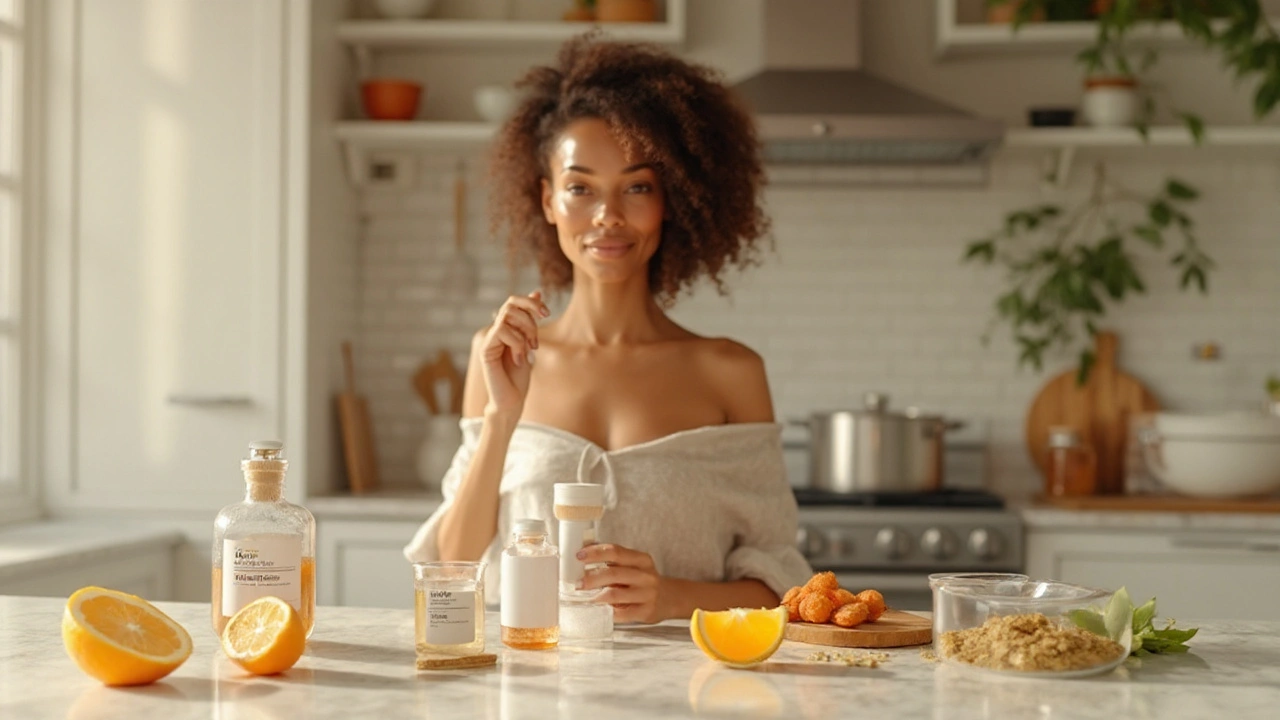Age Spot Ingredients You Should Know Before You Buy
Ever stared at a bottle and wondered if the stuff inside will really lighten those stubborn age spots? You’re not alone. Most people pick a cream because the label looks promising, but without knowing what each ingredient does, you might waste money or irritate your skin.
Below, I break down the most common ingredients you’ll see on anti‑age‑spot products, explain how they work, and point out any red flags. This way you can match the ingredient to your skin’s needs, not just a catchy claim.
Common Ingredients in Over‑the‑Counter Formulas
Hydroquinone – The gold standard for fading dark patches. It blocks melanin production, so spots get lighter over weeks. Most OTC versions cap at 2%, which is safe for short‑term use, but you should stop after a few months to avoid irritation.
Retinoids (Retinol, Retinyl Palmitate) – Vitamin A derivatives speed up cell turnover, helping new, evenly pigmented skin replace the old. They can cause dryness, so start with a low concentration and use a moisturizer.
Vitamin C (Ascorbic Acid) – An antioxidant that interferes with melanin formation and brightens overall complexion. Look for formulas with a stable, low‑pH version; otherwise the vitamin degrades quickly.
Niacinamide – A form of vitamin B3 that reduces pigment transfer from melanocytes to skin cells. It’s gentle, works well with other actives, and also improves barrier function.
Alpha Arbutin – A plant‑derived molecule that slows melanin production. It’s less irritating than hydroquinone and can be used long‑term, though results are slower.
Natural Alternatives You Can Try
If you prefer botanical options, several natural extracts have shown promise. Licorice root extract contains glabridin, which blocks the enzyme tyrosinase responsible for melanin synthesis. It’s soothing and good for sensitive skin.
Green tea extract (EGCG) also inhibits tyrosinase and provides antioxidant protection. You’ll often find it in serums marketed for brightening.
Bearberry (Arbutin) works similarly to alpha arbutin but is derived from a plant source. It’s milder than hydroquinone and suitable for daily use.
For a DIY route, you can mix lemon juice with honey and apply for a short period, but be careful: citrus can increase photosensitivity, so always wear sunscreen afterward.
Speaking of sunscreen, no ingredient will keep spots from returning if you skip sun protection. A broad‑spectrum SPF 30+ shields your skin and gives the actives a fighting chance.
In practice, the best results come from layering gentle brighteners like niacinamide or vitamin C in the morning, and a stronger agent like retinoid or hydroquinone at night. Give each product at least four weeks before judging its effectiveness.
Remember, everyone’s skin reacts differently. Patch‑test new products on your jawline, start slow, and adjust based on how your skin feels. If irritation persists, it’s wise to consult a dermatologist who can prescribe stronger options or tailor a regimen for you.
Bottom line: focus on ingredients with proven skin‑lightening mechanisms, pair them with diligent sunscreen, and stay patient. Over time, those age spots will fade, and your skin tone will look more even without resorting to marketing hype.
Top Skincare Ingredients for Stopping Age Spots
Discover the most effective ingredients to prevent and treat age spots, how they work, and how to build a safe, brightening routine.
Read more
